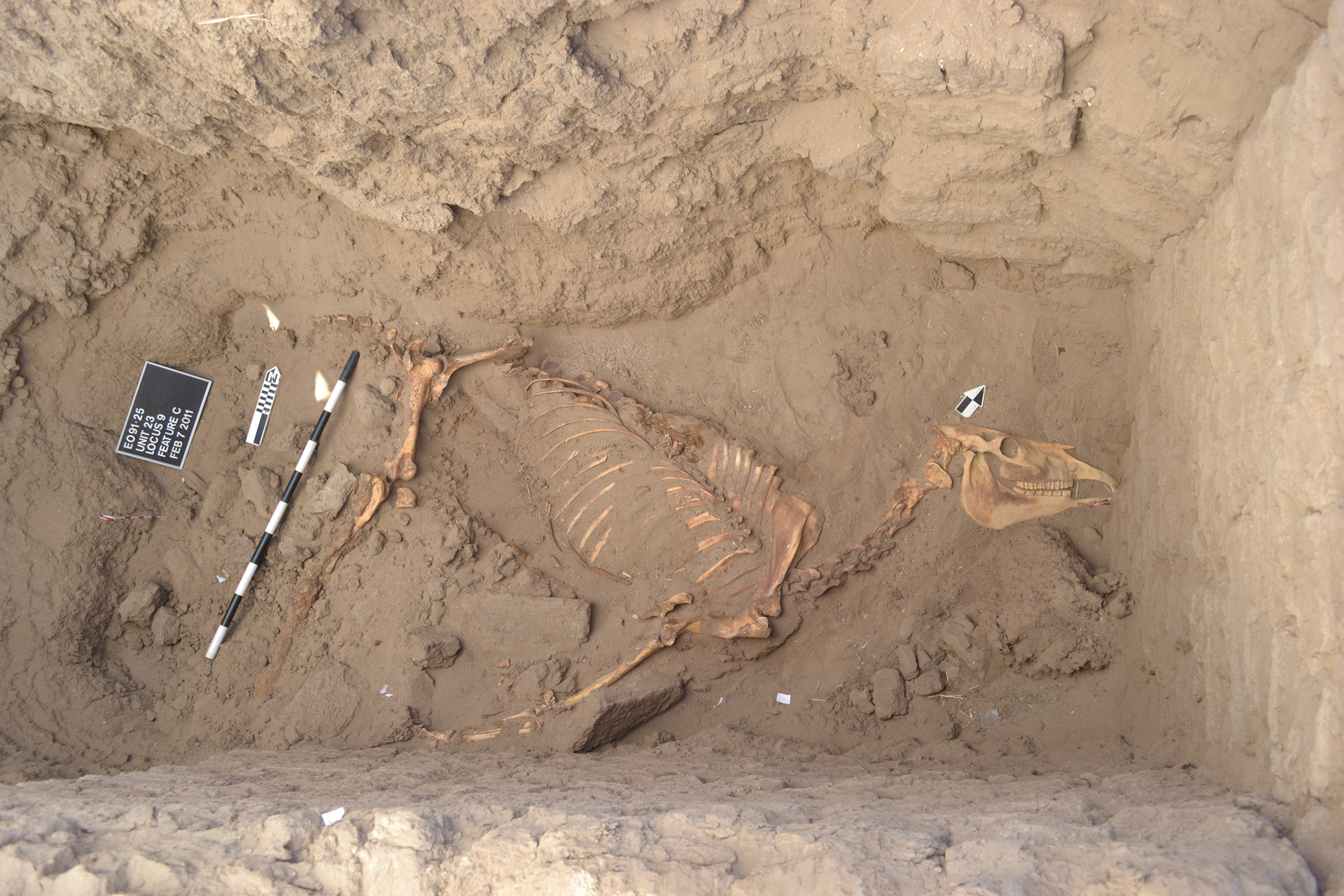
Horse found buried in a ceremonial tomb 3,000 years ago
Horse found buried in a ceremonial tomb 3,000 years ago. The remains of an ancient horse recovered along the Nile River Valley is providing scientists with new insight into the relationship between humans and animals over 3,000 years ago. The researchers were amazed to discover that the horse had been given a proper funeral with a burial shroud.
The horse was found in 2011 in Tombos, Sudan, more than 5 feet underground in a tomb. The skeleton was so well-preserved that some chestnut hair still remained on the horse’s legs.
“It was clear that the horse was an intentional burial, which was super fascinating,” said Professor Michele Buzon of Purdue University.
“Remnants of fabric on the hooves indicate the presence of a burial shroud. Changes on the bones and iron pieces of a bridle suggest that the horse may have pulled a chariot. We hadn’t found anything like this in our previous excavations at Tombos. Animal remains are very rare at the site.”
Professor Buzon has been studying remains at this dig site in Sudan since 2000 with Stuart Tyson Smith, an Anthropology professor at the University of California, Santa Barbara.
The team excavates and analyzes artifacts to understand the lives of Nubians and Egyptians during the New Kingdom Empire, which is when Egyptians colonized the area to access to trade routes on the Nile River around 1500 B.C. Hundreds of pieces of cultural evidence recovered at this burial site, such as tools and pottery, have been attributed to around 200 people.
“Finding the horse was unexpected,” said study lead author Sarah Schrader. “Initially, we weren’t sure if it was modern or not. But as we slowly uncovered the remains, we began to find artifacts associated with the horse, such as the scarab, the shroud and the iron cheekpiece. At that point, we realized how significant this find was. Of course, we became even more excited when the carbon-14 dates were assessed and confirmed how old the horse was.”
Radiocarbon dating traced the age of the horse back to the Third Intermediate Period, from 1050-728 B.C.E.
“The horse was treated well in life, seeing as how it lived to a mature age,” said Schrader. “It also was important to the people of ancient Tombos because it was buried – a rite that is usually reserved for humans. Furthermore, the fact that one of the earliest pieces of iron from Africa was found in association with the horse reiterates how special it was to the people. It is also important to assess the context of Tombos with regard to the horse – the horse is an important and rare find. The fact that it is buried at Tombos indicates that this town may have served an important function in the post-colonial Napatan Period.”
The study is published in the journal Antiquity.
—
By Chrissy Sexton, Earth.com Staff Writer
Image Credit: Purdue University













